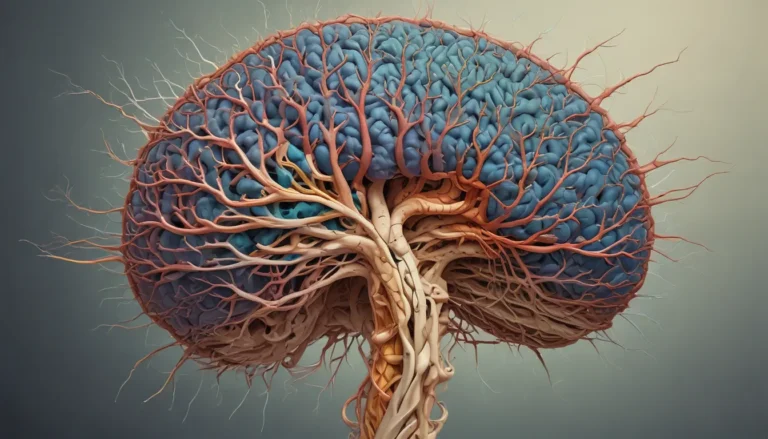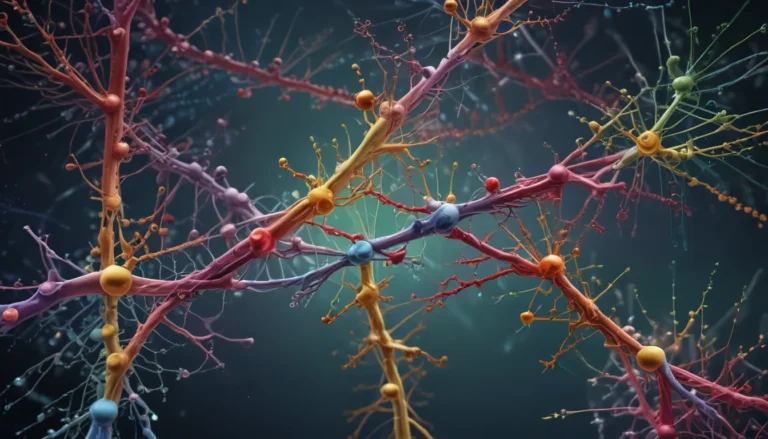A Note About Images: The images used in our articles are for illustration purposes only and may not exactly match the content. They are meant to engage readers, but the text should be relied upon for accurate information.
In the captivating realm of neuroscience, long-term potentiation (LTP) stands out as a fundamental process that significantly impacts learning and memory. This phenomenon involves the persistent strengthening of synapses, the connections between neurons, leading to improved communication and enhanced neuronal signaling. LTP serves as a cornerstone concept in comprehending how memories are formed and retained within the intricate structures of the brain.
Exploring the Marvels of Long-Term Potentiation
Join us on a journey through the fascinating world of LTP as we uncover some surprising facts that may astonish you. From the initial revelation of LTP to its involvement in neuronal plasticity, we will delve into various aspects of this phenomenon. Prepare to expand your knowledge and be amazed by the intricate mechanisms underlying long-term potentiation.
Key Insights into Long-Term Potentiation
- Long-Term Potentiation (LTP) is a pivotal process essential for learning and memory, with roots dating back to the 1970s, characterized by NMDA receptors, high-frequency stimulation, and environmental enrichment.
- Understanding LTP has the potential to lead to therapies for memory-related disorders, as disruptions in LTP have been linked to conditions like Alzheimer’s and Parkinson’s disease.
Unveiling the Significance of LTP in Learning and Memory
Long-Term Potentiation (LTP) serves as a foundational process in encoding and storing memories by facilitating persistent strengthening of synapses. This mechanism allows neurons to establish enduring connections, thereby enabling the efficient transfer of information within the brain.
A Glimpse into the Discovery of LTP
In the 1970s, Terje Lømo and Timothy Bliss made a groundbreaking discovery of LTP during their experiments on the hippocampus, a brain region associated with learning and memory. This pivotal revelation revolutionized the understanding of synaptic plasticity, laying the foundation for numerous advancements in neuroscience.
Unraveling the Role of NMDA Receptors in LTP
NMDA (N-methyl-D-aspartate) receptors play a crucial role in the orchestration of LTP. These receptors regulate the influx of calcium into the postsynaptic neuron, initiating a cascade of molecular events that culminate in the strengthening of synapses.
Diverse Manifestations of LTP in Different Brain Regions
While LTP was initially identified in the hippocampus, researchers have detected manifestations of this phenomenon in various other brain regions, including the neocortex and amygdala. This diversity underscores the multifaceted role of LTP in different facets of learning and memory consolidation.
Initiating LTP Through High-Frequency Stimulation
One effective method of inducing LTP involves the application of high-frequency stimulation to presynaptic neurons. This repetitive stimulation triggers a sustained enhancement in synaptic strength, ultimately bolstering neuronal communication.
Bridging Short-Term and Long-Term Memory Through LTP
LTP plays a pivotal role not only in the formation of long-term memories but also in facilitating short-term memory processes. By temporarily strengthening synapses, LTP aids in the storage and retrieval of recently acquired information.
Diverse Influences on LTP Modulation
The induction and maintenance of LTP are subject to modulation by various factors, including neurotransmitters like glutamate and acetylcholine, as well as the activation of specific signaling pathways within neurons. These diverse influences shape the dynamics of LTP.
Insights into LTP Dysfunctions in Neurological Disorders
Disruptions in LTP have been associated with neurological conditions such as Alzheimer’s disease, Parkinson’s disease, and schizophrenia. Understanding the mechanisms underlying LTP dysfunction in these disorders offers valuable insights into potential treatments.
Enhancing LTP Through Environmental Enrichment
Studies have demonstrated that an enriched environment, characterized by increased sensory stimulation and social interaction, can promote LTP and enhance cognitive function. This underscores the importance of a stimulating environment in fostering healthy brain function.
Unveiling the Versatility of LTP Across Synaptic Types
While traditionally linked with excitatory synapses, recent research suggests that a similar synaptic plasticity, known as long-term depression (LTD), can occur at inhibitory synapses. The delicate balance between LTP and LTD is crucial for maintaining optimal synaptic function.
Exploring Experimental Techniques in LTP Research
Researchers employ a wide array of experimental methods, including electrophysiology, molecular biology, and imaging techniques, to unravel the intricacies of LTP mechanisms. These approaches offer profound insights into the complex processes underlying synaptic plasticity.
Harnessing LTP Research for Therapeutic Solutions
By unraveling the mysteries of LTP, scientists aim to explore potential therapeutic interventions for memory-related disorders. Enhancing or restoring LTP holds promise for improving cognitive function and supporting individuals facing conditions such as age-related cognitive decline or memory impairments.
In the captivating tapestry of neuroscience, long-term potentiation (LTP) emerges as a crucial player in unraveling the enigma of memory and learning processes. Through the persistent strengthening of synaptic connections, LTP paves the way for the encoding and retention of new information within the brain. This intricate process, governed by diverse signaling pathways and molecular mechanisms, embodies the essence of cognitive function and memory consolidation.
Concluding Thoughts on Long-Term Potentiation
In conclusion, long-term potentiation (LTP) stands as a captivating phenomenon that significantly influences our comprehension of memory and learning mechanisms. By shedding light on the pivotal role of LTP in synaptic plasticity, we have unearthed 12 surprising facts that underscore its significance and complexity. From its seminal discovery to its implications in neurodegenerative diseases, LTP continues to captivate researchers worldwide.
FAQ: Exploring Further Insights on LTP
- What defines long-term potentiation (LTP) in the brain?
Long-term potentiation (LTP) is a process that enhances the synaptic connections between neurons, facilitating more efficient signal transmission. It is considered a foundational mechanism underpinning learning and memory.
- Who discovered LTP and how was it revealed?
LTP was first observed by Norwegian neuroscientist Terje Lømo in the 1960s. He noted that high-frequency electrical stimulation in the hippocampus led to a sustained increase in synaptic strength.
- What role does glutamate play in the dynamics of LTP?
Glutamate, the brain’s primary excitatory neurotransmitter, plays a pivotal role in LTP by activating specific receptors, including the NMDA receptor crucial for inducing LTP.
- Is it possible to reverse long-term potentiation (LTP)?
Yes, LTP can be reversed through a process called long-term depression (LTD), which weakens synaptic connections, fostering synaptic plasticity to accommodate new memories.
- How does LTP contribute to memory formation and consolidation?
LTP bolsters synaptic connections, enabling the encoding and retention of information as memories. It enhances communication between brain regions involved in memory consolidation.
- What implications does LTP have for neurodegenerative diseases?
Dysfunctions in LTP may be implicated in neurodegenerative ailments like Alzheimer’s and Parkinson’s, prompting investigations into potential therapeutic interventions.
- Can LTP be artificially induced in experimental settings?
Researchers have successfully induced LTP through diverse methods, including electrical stimulation, pharmacological agents, and optogenetics. These techniques facilitate the modulation of synaptic strength for studying brain function.
- How can studying LTP contribute to advancements in human health?
Exploring LTP offers insights into cognition and memory, potentially leading to breakthroughs in addressing conditions such as dementia, learning disabilities, and mental health disorders.
- Are there risks associated with modulating LTP for therapeutic purposes?
As with any area of research, there are inherent risks and ethical considerations tied to LTP modulation. Thorough evaluation of potential benefits and risks is crucial before implementing LTP-based interventions.
- Can natural methods enhance LTP?
While awaiting further research, engaging in activities like exercise, sufficient sleep, and cognitive challenges may positively impact LTP and overall brain health.
- Is it feasible to measure LTP in human subjects?
Although LTP has been demonstrated in animal studies, directly measuring LTP in humans poses challenges. Neuroimaging techniques like functional magnetic resonance imaging (fMRI) offer indirect insights into neural processes akin to LTP.
- How does aging influence LTP dynamics?
Age-related declines in LTP may contribute to cognitive deterioration and memory impairments in older adults. Studying age-related changes in LTP could inform strategies to preserve cognitive function later in life.
Embark on a captivating voyage through the enigmatic realm of long-term potentiation (LTP)-an indispensable process shaping our understanding of memory and cognition. Delve into the intricacies of synaptic plasticity, from the mechanisms underlying LTP to its profound implications for neurological health. Uncover the profound significance of LTP in unlocking the mysteries of the human brain and illuminating pathways to enhanced cognitive function.






